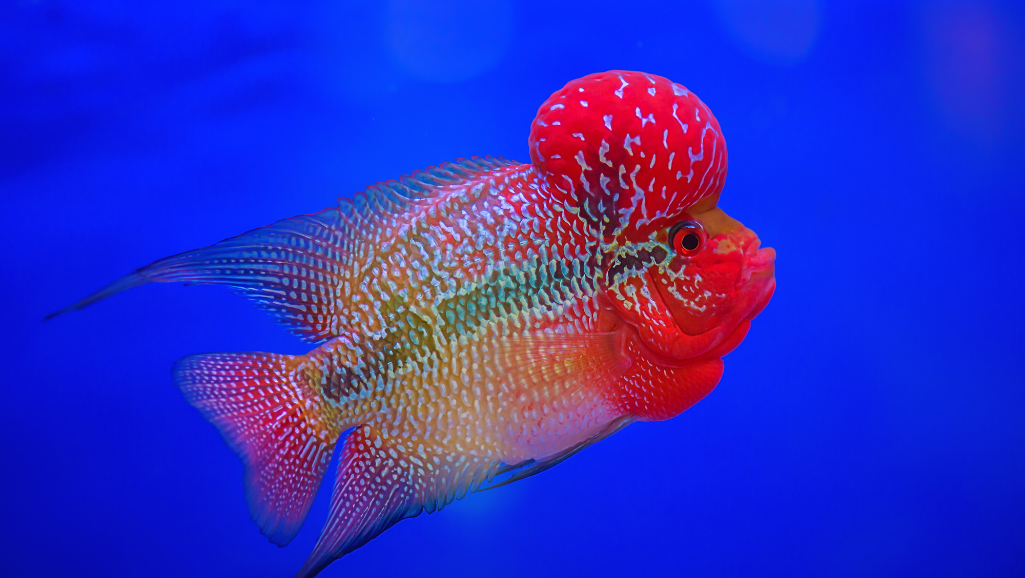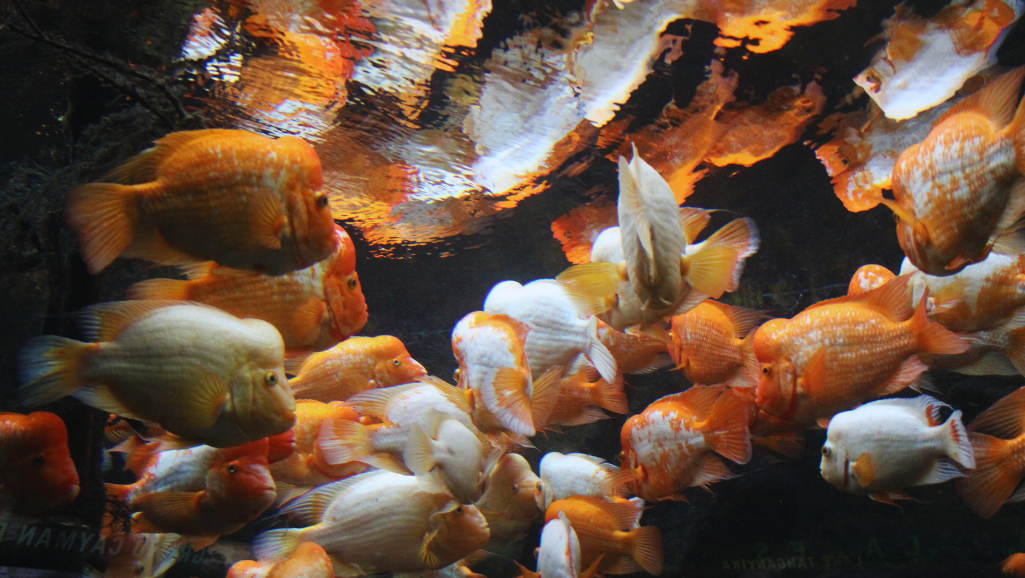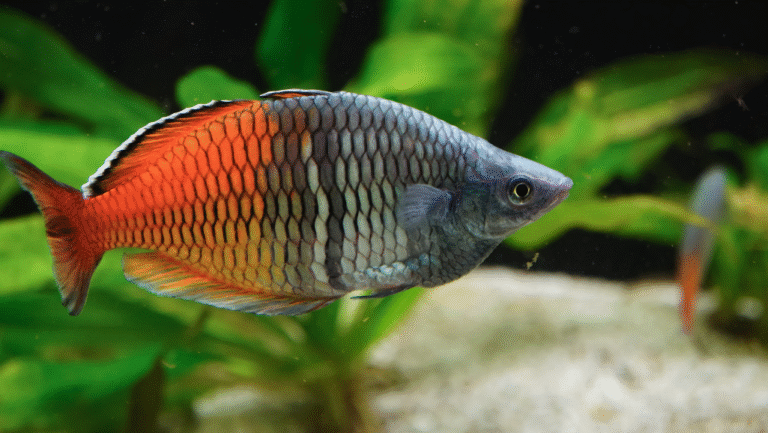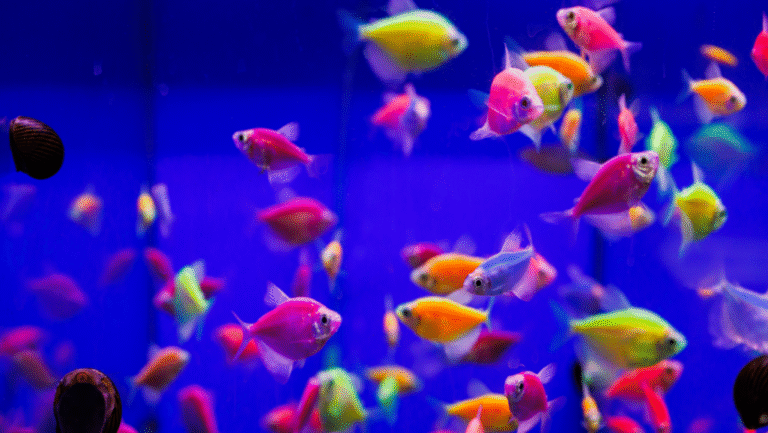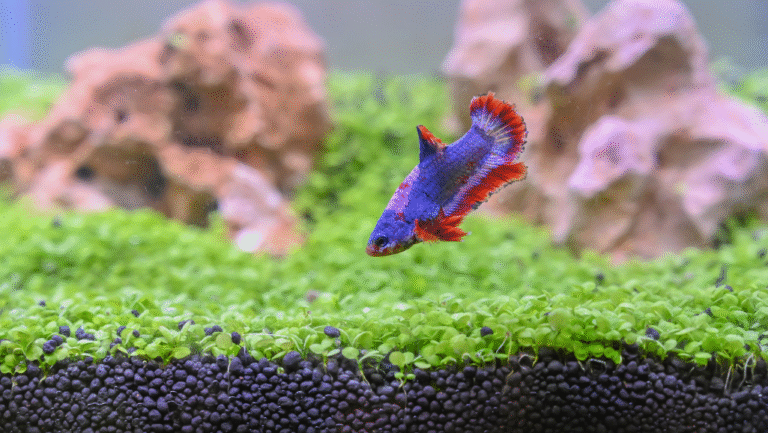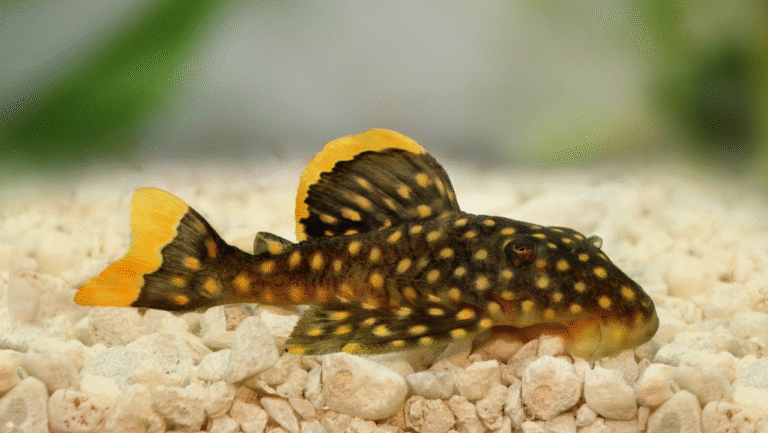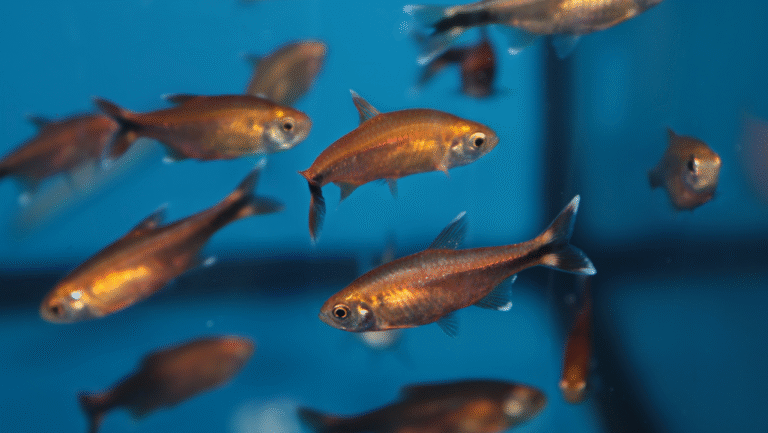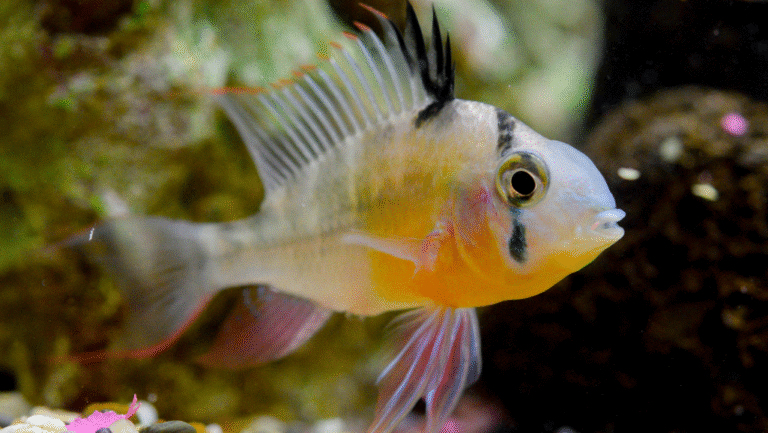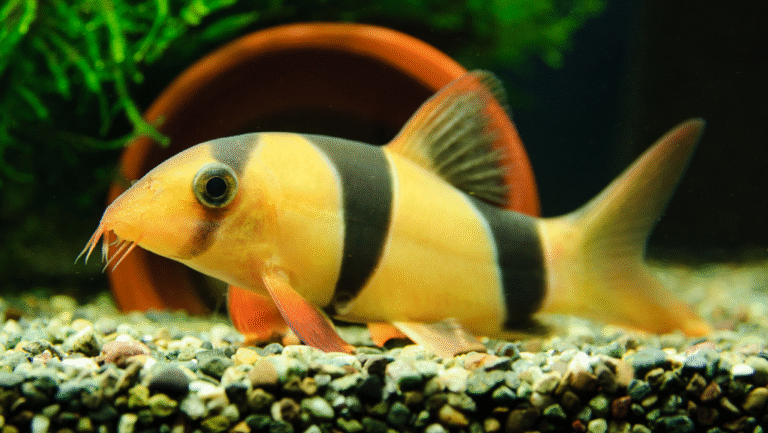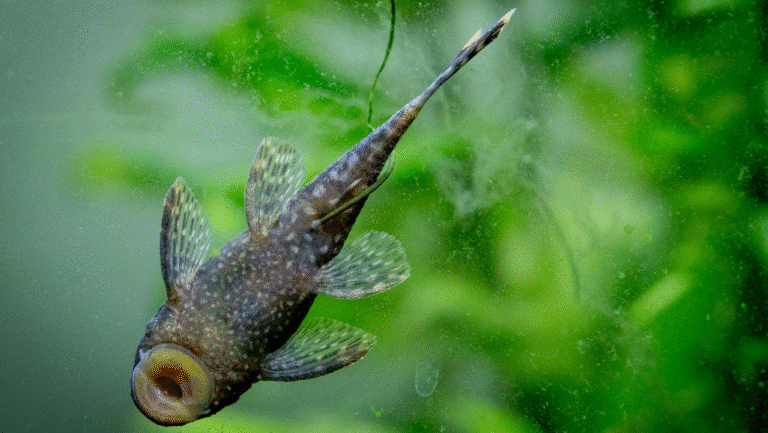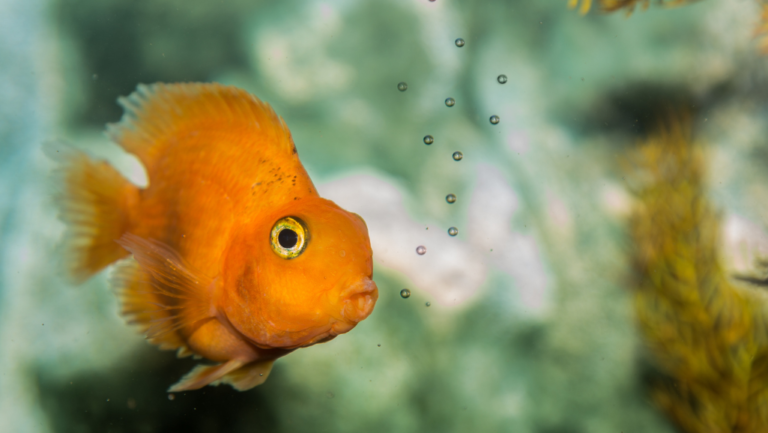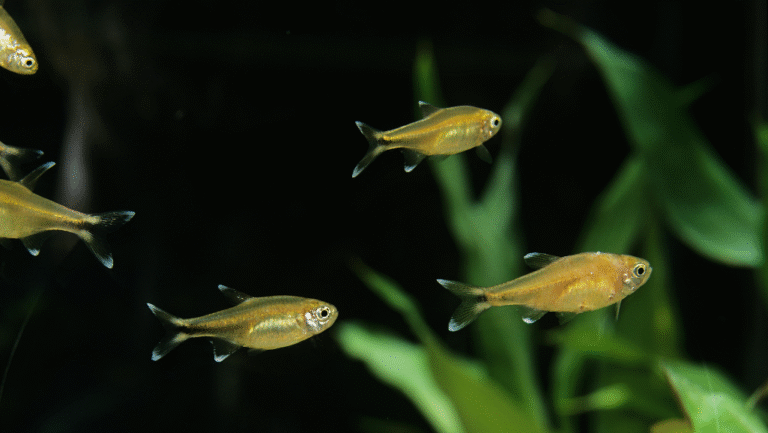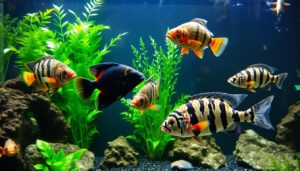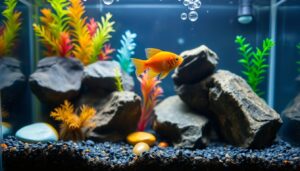Flowerhorn cichlids first appeared in aquariums in Malaysia in the late 1990s. They quickly won the hearts of many exotic pet lovers in Asia, the United States, and Europe. Their bright colors and unique head bump make them stand out among ornamental fish.
These fish are hybrids and don’t exist naturally. Their popularity has caused problems, like becoming invasive in Singapore and Malaysia. Australia has banned them because of this.
These fish need special care. They do best in tanks of 70-100 gallons, with water between 77-84°F (25-29°C). They like slightly alkaline water, with pH levels from 7.0 to 8.0. They can live 8 to 10 years and grow up to 10-12 inches long.
Breeding Flowerhorn cichlids is a big challenge. Males are usually bigger and more colorful, with a distinctive forehead bump. Females have a U-shaped ovipositor. It’s hard to tell the gender and ensure they can breed, making successful breeding a big achievement for aquarists.
Key Takeaways
- Flowerhorn cichlids emerged in the late 1990s in Malaysia
- They require large tanks of 70-100 gallons
- Water parameters: pH 7.0-8.0, temperature 77-84°F (25-29°C)
- Lifespan of 8-10 years, growing up to 10-12 inches
- Males typically have larger size, brighter colors, and a nuchal hump
- Breeding can be challenging due to fertility issues
- Their release has led to invasive populations in some regions
Introduction to Flowerhorn Cichlids
Flowerhorn cichlids made a splash in the aquarium world in the 1990s. They quickly won over the hearts of tropical fish lovers. These colorful hybrid fish, a mix of South American cichlids, shine brightly in the freshwater fish scene.
Origin and History
The tale of Flowerhorn cichlids started in 1993 in Southeast Asia. In Malaysia, Thailand, and Taiwan, breeders mixed different cichlid species. They aimed to create a fish with striking colors and a special head shape. By 1999, four main types were introduced to American aquariums: regular, pearl-scale, golden, and faders.
Popularity in the Aquarium Hobby
Flowerhorns quickly became favorites for their stunning looks and lively personalities. Some think they bring good luck, which has driven up their prices. In 2009, a Golden Monkey Flowerhorn was sold for over $600,000 at a Malaysian show!
Distinctive Features
What makes Flowerhorns unique? Their most striking feature is the nuchal hump, or “kok,” on their forehead. Males have bigger humps and brighter colors. These tropical fish can grow up to 12 inches long and live 10-12 years with the right care.
| Feature | Description |
|---|---|
| Size | Males up to 12″, Females around 6″ |
| Lifespan | 10-12 years |
| Tank Size | Minimum 55 gallons, 125 gallons optimal |
| Water Temperature | 28°C (82°F) |
| pH Level | 6-8 |
Physical Characteristics of Flowerhorn Cichlids
Flowerhorn cichlids are striking Cichlid Fish known for their unique appearance. These vibrant creatures have captured the hearts of aquarium enthusiasts worldwide. Let’s dive into the fascinating physical traits that make these fish stand out in the aquatic world.
Body Shape and Size
Flowerhorn cichlids boast a robust, heavyset body that can reach impressive dimensions. These fish can grow up to 30 cm (12 inches) in length, making them a substantial presence in any aquarium. Their size demands spacious living quarters, with a minimum tank size of 100 gallons recommended for a single adult.
Coloration and Patterns
One of the most captivating aspects of Flowerhorn cichlids is their vivid coloration. These fish display a wide array of hues, from deep reds to bright yellows and blues. Their patterns can be equally diverse, featuring spots, stripes, or marbled designs that make each fish unique. The intensity of their colors often reflects their overall health and well-being.
The Iconic Nuchal Hump
Perhaps the most distinctive feature of Flowerhorn cichlids is their prominent nuchal hump, also known as a “kok.” This fleshy protrusion on the forehead is more pronounced in males and can vary in size. The hump’s development is influenced by factors such as genetics, diet, and overall health. Some enthusiasts even consider the size and shape of the hump when assessing the quality of a Flowerhorn cichlid.
| Characteristic | Description |
|---|---|
| Maximum Length | 30 cm (12 inches) |
| Lifespan | Up to 10 years |
| Minimum Tank Size | 100 gallons |
| Notable Features | Vibrant colors, heavyset body, nuchal hump |
These remarkable physical traits make Flowerhorn cichlids a popular choice among Parrot Fish enthusiasts. Their unique appearance, combined with their interesting personalities, ensures they remain a beloved species in the aquarium hobby.
Flowerhorn Cichlid Varieties and Strains
Flowerhorn cichlids are popular pets in the aquarium world. They come in many strains, each with its own look. The main types are Zhen Zhu, Golden Monkey, Kamfa, and Golden Base.
The King Kamfa is known for its big nuchal hump and cool patterns. The Golden Monkey is rare and pricey, with a special face. In 2009, one sold for $600,000, showing its high value.
- Super Red Dragon (SRD): Easy to find with unique coloring patterns
- Thai Silk: Highly priced due to import and breeding difficulties
- Devil Wolf: Known for deep reds and fiery oranges
- Rose Queen: Resembles a parrot fish in appearance
- Super Red Monkey: Deep red color with a unique body structure
The Zhen Zhu Flowerhorn is calm and has shiny, pearl-like colors. The Golden Base Flowerhorn is vibrant gold and can be aggressive. These types show the wide range of Flowerhorn cichlids available to hobbyists.
| Variety | Key Features | Temperament |
|---|---|---|
| Zhen Zhu | Pearl-like colors | Calm |
| Golden Monkey | Unique face shape | Rare |
| King Kamfa | Massive nuchal hump | Varied |
| Golden Base | Vibrant gold color | Aggressive |
Setting Up the Perfect Flowerhorn Aquarium
Creating a great home for your flowerhorn cichlid is key for its health and beauty. These fish need special conditions to do well in a tank.
Tank Size and Requirements
Flowerhorns need lots of room to swim and grow. A 90-gallon tank is ideal for one fish. But, a pair needs at least 150 gallons. They can grow up to 12 inches long, with males often bigger than females.
Water Parameters and Maintenance
Keeping the water right is crucial for your flowerhorn’s health. The temperature should be between 75°-82°F (24°-28°C). The pH level should be 6.5-7.5. It’s also important to change the water regularly to keep ammonia, nitrite, and nitrates low.
| Parameter | Ideal Range |
|---|---|
| Temperature | 75°-82°F (24°-28°C) |
| pH | 6.5-7.5 |
| GH | 8-12 dGH |
| KH | 3-12 dKH |
Decoration and Substrate Choices
Choose light-colored substrates and decorations to make your flowerhorn’s colors stand out. White or brown stones are better than black. Use blue or green backgrounds to highlight their vibrant colors. Make sure there are places for them to hide and open spaces for swimming.
With the right setup and care, your flowerhorn cichlid can live up to 12 years. They will add beauty and personality to your freshwater aquarium.
Feeding and Nutrition for Flowerhorn Cichlids
Flowerhorn cichlids, popular tropical fish, need a balanced diet for health. They love high-quality cichlid pellets as their main food. Add live or frozen foods like bloodworms and brine shrimp to their meals.
Feed your Flowerhorn 2-3 times a day in small amounts. This keeps the water clean. Don’t give them beef or beef heart because it’s hard for them to digest and can harm their liver.
Studies show that vitamins C and E (1000 mg/kg each) and red bell pepper (10 g per kg of food) can help their health. These supplements can improve growth and overall well-being.
Dr. Peter Burgess, fish health expert, warns against feeding red meats to cichlids due to potential liver damage and increased waste production.
Here’s a good feeding schedule for your Flowerhorn:
| Life Stage | Recommended Food | Feeding Frequency |
|---|---|---|
| Larval | Artemia nauplii | 4-5 times daily |
| Fry | Oxheart, Tubifex worms | 3-4 times daily |
| Adult | Cichlid pellets, vegetables | 2-3 times daily |
By following these guidelines, you’ll give your Flowerhorn cichlid the right food for a long, healthy life. Up to 10 years is possible. Remember, good nutrition is crucial for successful fish breeding and keeping your tropical fish vibrant.
Behavior and Temperament of Flowerhorn Cichlids
Flowerhorn cichlids are known for their unique personalities and vibrant colors. They are a favorite among aquarium fish enthusiasts. These cichlid fish have behaviors that make them stand out.
Aggression Levels
Flowerhorn cichlids are territorial and can be quite aggressive. They like to swim in pairs and claim territories in caves and rocky areas. A minimum tank size of 150 gallons is recommended for a pair to reduce aggression and provide enough space.
Compatibility with Other Fish
Because of their aggressive nature, flowerhorn cichlids are best kept alone. If you do keep them with other cichlids, a tank of at least 200 gallons is needed to prevent conflicts. It’s important to choose tankmates carefully to keep the aquarium peaceful.
Personality Traits
Flowerhorn cichlids are most active during the day. They are intelligent and can form bonds with their owners. They even recognize individual people. Their iconic nuchal hump, which can grow larger than five inches, makes them even more unique.
| Characteristic | Description |
|---|---|
| Activity Level | Most active during daytime |
| Territorial Behavior | Establish territories in caves and rocky areas |
| Social Interaction | Can bond with owners and recognize individuals |
| Feeding Frequency | Up to three times per day |
Understanding flowerhorn cichlids’ behavior and temperament is key to their care. Their unique personalities and striking appearance make them a fascinating addition to any cichlid fish collection.
Breeding Flowerhorn Cichlids
Fish breeding fans find Flowerhorn cichlids a fascinating challenge. These hybrid fish, born in Malaysia in the 1990s, quickly became famous for their beauty and supposed luck-bringing powers. Breeding Flowerhorn cichlids turned into a profitable business, with top-quality fish selling for hundreds of thousands of dollars.
Flowerhorns grow ready to breed at 8-10 months. They like to lay eggs on flat spots in tanks with a pH that’s neutral to slightly basic and water at 82°F. Keeping the water clean by changing 20% twice a week is key for breeding success.
Getting them to breed can take patience and many tries. Parents guard their eggs and young but can get fierce during breeding. Feeding them a varied diet helps get them ready for breeding.
“Only about 5 percent of Flowerhorn offspring are considered high-quality show fish.”
While breeding Flowerhorns is relatively simple, the quality of their young is hit-or-miss. This unpredictability makes breeding them exciting and challenging. Also, many male Flowerhorns can’t breed, making things even more complex.
There are ethical concerns with breeding hybrid fish. Released Flowerhorns have started breeding in Southeast Asia’s wild, causing problems. Their aggressive nature and high birth rate can harm the environment. So, it’s important to breed responsibly to avoid harming nature.
Health and Common Diseases in Flowerhorn Cichlids
Flowerhorn Cichlids are popular in the aquarium hobby. They can face health challenges. It’s important to know about these issues to keep them healthy and long-lived.
Preventive Care
Keeping Flowerhorn Cichlids healthy starts with good care. Regularly change 10-25% of the water every two weeks. Keep the water temperature between 75-82°F and the pH levels from 6.0 to 7.6.
Add aquarium salt and conditioners to reduce stress. This helps prevent diseases.
Identifying and Treating Common Ailments
Flowerhorns can get sick with several diseases. Hole-in-the-head disease is caused by bad water quality. It’s treated with Metronidazole.
White spot disease shows as white or yellow spots. It’s treated with Epsom salt and warmer water.
Fin rot is a fungal infection that needs special treatment. Flukes, external parasites, require a 75% water change and formalin treatment. Dropsy is treated by improving water conditions and reducing stress.
Lifespan and Growth Rate
With the right care, Flowerhorn Cichlids can live up to 12 years. They grow fast in their first year, reaching full size in 1-2 years. Watching them closely and treating any health issues quickly is key to their long, healthy life.
| Disease | Symptoms | Treatment |
|---|---|---|
| Hole-in-the-head | Small holes on head | Metronidazole |
| White spot | White/yellow spots | Epsom salt, increased temperature |
| Fin rot | Deteriorating fins | Quarantine, Methylene blue |
Flowerhorn Cichlids in the Aquarium Trade
Flowerhorn Cichlids have become a big hit in the aquarium trade since the late 1990s. They are a mix of different cichlid species. Their unique look and personality have won over many fish lovers.
Many strains of Flowerhorn Cichlids have been developed. Each has its own special traits. Some well-known types include:
- Kamfa
- Zhen Zhu
- Golden Monkey
- Thai Silk
- Fader
These tropical fish can grow really big, over 12 inches long. Their bright colors and special head features make them very popular in aquariums.
When picking a Flowerhorn, people look at its color, shape, fins, and how it acts. The best ones can cost a lot, especially if they have big heads or cool patterns.
Even though Flowerhorns are very popular, their hybrid nature and selective breeding have raised some concerns. It’s important for those interested in owning them to learn about the care they need.
Ethical Considerations and Environmental Impact
The Flowerhorn cichlid is a popular fish in aquariums, but it raises big questions. These fish, made by mixing different species, have sparked a lot of debate. They are unique but also raise concerns about ethics and the environment.
Hybridization Concerns
Flowerhorn cichlids are made by mixing different cichlid species. This has made it hard to know what pure cichlid strains are. With over 1,500 cichlid species in nature, making hybrids like Flowerhorns can harm species preservation.
Release into Natural Habitats
Releasing Flowerhorn cichlids into the wild is very risky. In 2003, a craze in Singapore led to many fish being released into the wild. This can mess up local ecosystems, especially in places like Malaysia where these fish have adapted.
Conservation Efforts
Efforts to save fish focus on teaching owners how to care for them responsibly. Keeping aquariums healthy means not overharvesting fish. Laws around the world now help control the trade of endangered fish to keep the hobby sustainable.
“Ensuring sustainable practices not only protects fish but also supports the long-term viability of the aquarium hobby.” – Dietmar Kültz, 2022
Tips for Successful Flowerhorn Cichlid Care
Keeping Flowerhorn cichlids requires careful attention. They need a big space to thrive. A tank of at least 200 liters (52.83 US gallons) is best for adults, which can grow up to 30 cm (11.81 inches) long.
Keep the water temperature between 25°C (77°F) and 30°C (86°F). The pH should be between 7 to 8 for their health.
Feeding is key for these hungry fish. Give them a mix of live, frozen, and dry food twice a day. This balanced diet helps them grow and stay colorful. Change 25% of the tank water weekly to keep conditions stable.
Decorate the tank with sturdy plants and flat surfaces for breeding. Add hiding spots to manage aggression. Flowerhorns can be territorial. Don’t keep them with other fish unless you have a partitioned tank.
Regular health checks and interactive feeding sessions help bond with your Flowerhorn. It makes them a rewarding part of your aquarium hobby.

